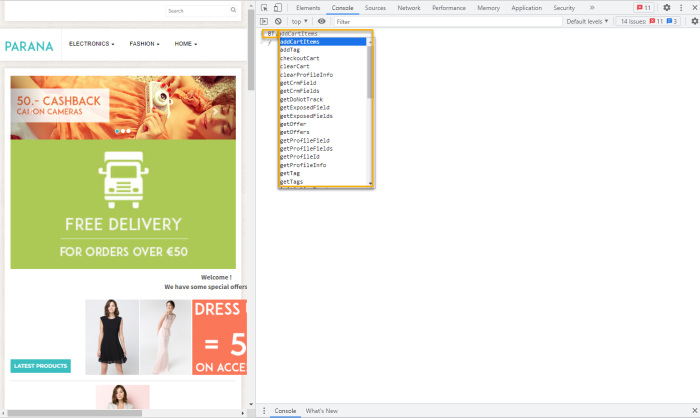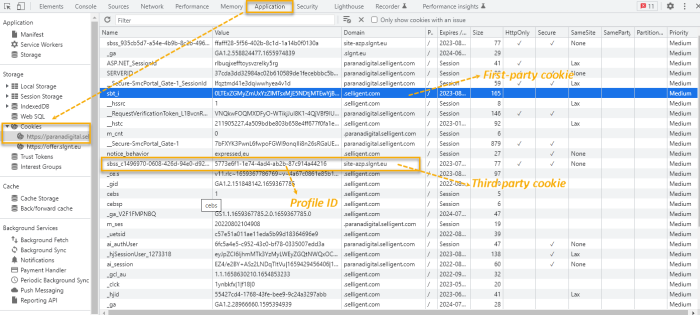Testing the Integration Script
Example of an integration script:
where
- The left orange section represents the originating domain.
- The middle pink section the CDN folder (represented by the universe ID) . Every universe has its proper folder and file. This file is generated automatically and includes information about placements defined for the universe. It is different for each install.)
- The right green is the script itself.
To check if the script is present on your website, open the browser developer tools while being on the website.
Note:
On most browsers, developer tools can be opened by pressing F12, or Ctrl + Shift + I (Cmd + Opt + I on Mac).
To be able to use developer tools in Safari, make sure developer options are enabled first, through Safari's Preferences > Advanced > Show Develop menu in menu bar.
If you want to read more about the developer tools for a specific browser, you can click any of these links : Google Chrome , Mozilla Firefox , Apple Safari , Microsoft Edge , Opera.
Go to Sources and then Page. The following entries should be visible: the domain, the folder and the script.
Note: Section 4, the green box at the top, represents the second script, which is fetched by the first script listed in section 3.
When the script is correctly loaded on the website, all Site methods should be available as well. On the Console, start typing 'BT.'. All Site methods are listed:
When the above tests fail, what are the possible reasons for script loading failure?
- Browser-based blocking — NoScript, adblock, etc.
- Interference from third-party scripts — This may result in a redefinition of the 'wa' object in the script, which is used by Site.
- Other website scripts delaying Site tracker script loading — Some earlier scripts may depend upon the Site script.
In addition, the Site integration script creates a cookie with a Site identifier. Check the cookies by going to the Application tab and opening the cookies entry on the left:
There should be an entry for your domain. Click on it to view the details. You will see first-party cookies (matches the website webshop) and third-party cookies.





